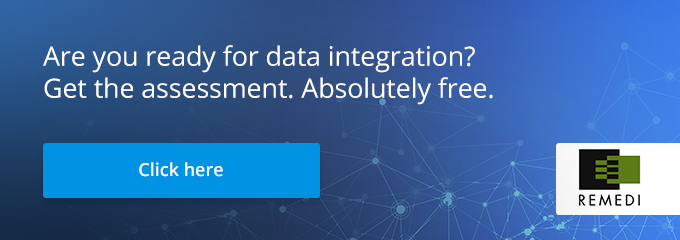
After you (re)visit why you are investing in EDI integration as part of the strategy process and you have examined some alternatives in supporting the strategy of your business, establishing an understanding of your present state becomes a critical first step in moving your integration capabilities forward.
EDI Best Practices
Assessing your current capabilities in people, process, and technology helps you plan the gap between where you are now and where you are (or should be) headed, and sometimes gives you criteria and a scorecard to measure against along the way.
What is EDI Benchmarking?
EDI benchmarking is a critical part of assessing and improving your organization’s EDI integration. By measuring your system performance using key EDI metrics and comparing it to industry standards and/or EDI best practices, you’re able to identify areas that would benefit from EDI-process improvement.
EDI Optimization
Down the line, improved EDI processes will mean increased efficiency, lowered costs and greater collaboration with trading partners in your supply chain. EDI benchmarking lets you remain competitive and consolidate your workflows while it helps ensure that your EDI system is in line with industry standards and can adapt as your business needs change.
B2B Complexity Drives EDI Benchmarking and Planning

Motivations to plan and benchmark as part of the strategic process vary. B2B integration complexity is growing due to increasing customer supply chain visibility and compliance demands, regulatory compliance, and analytics and insights required for business operations.
The Need for EDI Integration
Contrast this against aging systems and infrastructure, siloed solutions and data sources, and the intense competition for budget money, it seems more important than ever that you have an EDI integration strategic plan and perform regular capability assessments.
The Importance and Benefits of EDI Benchmarking
EDI benchmarking offers your organization numerous benefits. By holding up your own EDI processes against your industry's EDI best practices and standards, you can get a better understanding of your supply chain and where you may have operational efficiencies.
EDI Improvement
One of the primary advantages of EDI benchmarking is its ability to pinpoint those areas that need correction. It can also help you put into practice tailored strategies to address any shortcomings you find.
With benchmarking, you can use EDI metrics to evaluate your own system against sector leaders and your competitors. The desire to keep pace and get ahead is likely to make your company continually strive for EDI improvement.
Reduced Spend
Through improving efficiency and eliminating waste, benchmarking also saves your business money. By spending less either in cash, employee hours or both, your business will get to keep more of what it makes.
Visibility and Collaboration
EDI benchmarking also contributes to better supply chain visibility and collaboration. When you compare your own EDI integration to standards in your field, you're able to see and correct bottlenecks, errors and trading-partner-communication failures.
EDI benchmarking makes for a streamlined approach that improves your short- and long-term efficiency and bolsters your relationships with suppliers and customers.
What Information Should You Be Using for Benchmarks?
To determine whether you are getting the most out of your EDI solution, you need to know what benchmarks you should be using to track that success. Fortunately, it is not difficult to set or measure those benchmarks; you can judge them from what’s in your EDI solution already.
Incoming and Outgoing Data
If EDI is a substantial part of your business, your metrics are based on the data coming in and out of your EDI solution. How many purchase orders are coming in, and what are they worth to your company? Is your business conducted through a value-added network or sent over the web through AS2?
"Breaks in the Chain"
Knowing this data can tell you whether there are any “breaks in the chain.” If you are not receiving certain documents, or your documents are not being received, you have a problem. That problem can cost you business. It is important to know whether there are any weaknesses in your EDI solution so you can fix them as soon as possible.
Examples of Metrics to Benchmark
What should you use to benchmark your EDI? There are many key performance metrics, but below are some of the most common.
EDI 997: Functional Acknowledgement
You can use an EDI 997: Functional Acknowledgment, which acts as a receipt that information has been sent and it cannot be repudiated, but there is no guarantee of accuracy). How many 997 codes are being received? How many are failing, and are you failing to meet SLAs because you are not acknowledging those codes in a timely fashion?
EDI 856: Advance Shipping Notice
Advanced shipping notices (ASNs) are another metric you could use. Many trading partners require receipt of ASNs half an hour before a shipment arrives. These documents must contain specific instructions on how to break down an order, as well as information on whether an order is complete. If you are not sending out your ASNs on time, it’s a sign you need to improve that metric.
EDI 855: Purchase Order Acknowledgement
En EDI 855, or purchase order acknowledgement, confirms receipt and acceptance of a purchase order. Benchmarking this process can help ensure timely order confirmation. This is critical because by reducing the risk of discrepancies in the order, you reduce the chance of costly errors.
EDI Benchmarking Resources
Benchmarking can be accomplished utilizing peer trading partners, industry analyst reports and research, integration and EDI vendors, industry association data, and models that measure your location on some integration and EDI capability spectrum.
Here is a resource that allows you to identify your current EDI integration-capabilities state and aids in updating your plan in support of the overall business strategy: FREE Whitepaper: Preparing Your Integration Infrastructure to Support Business Strategy. It provides references to supporting research and useful steps for you to advance your integration capabilities along the maturity spectrum.
You might also be interested in checking out these related articles:
- Why B2B Integration Maturity Is Not A Bridge Too Far
- Exploring the Stages of Successful B2B Integration
- InfoGraphic - B2B Integration: Beyond the Buzzwords...IT Megatrends Making Business Faster and more Robust, Complex and Competitive
Where are you on the integration maturity spectrum? Are you ready for data integration? Get the assessment. Absolutely free.



